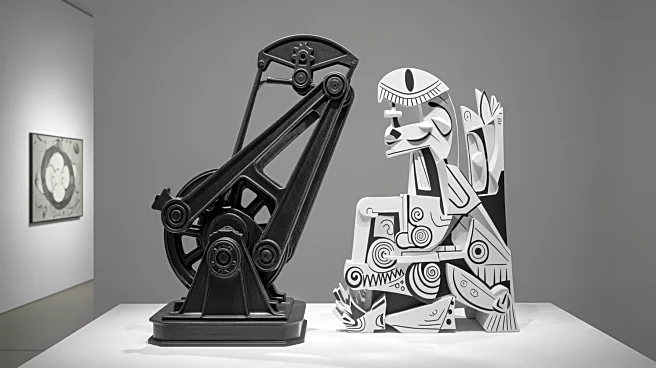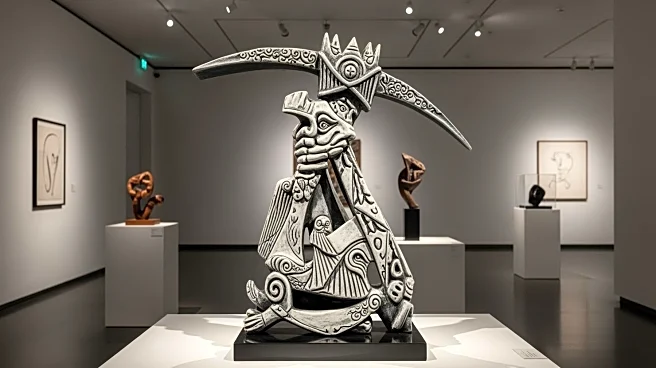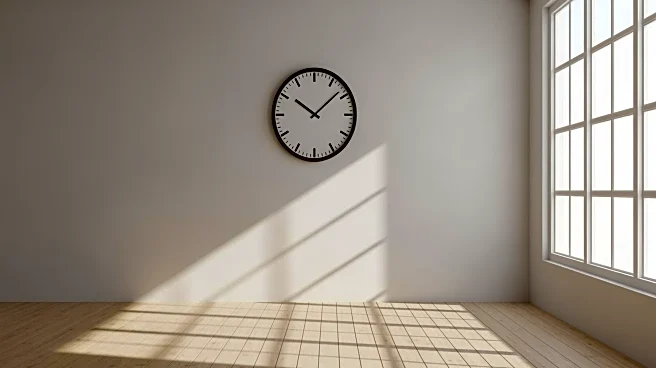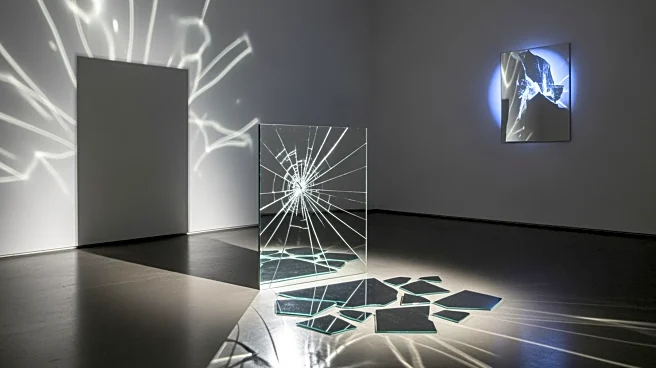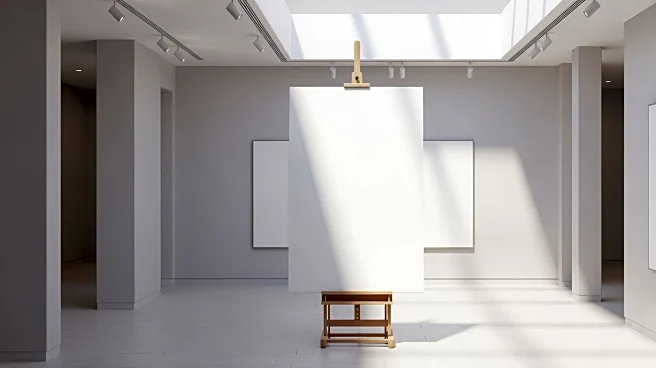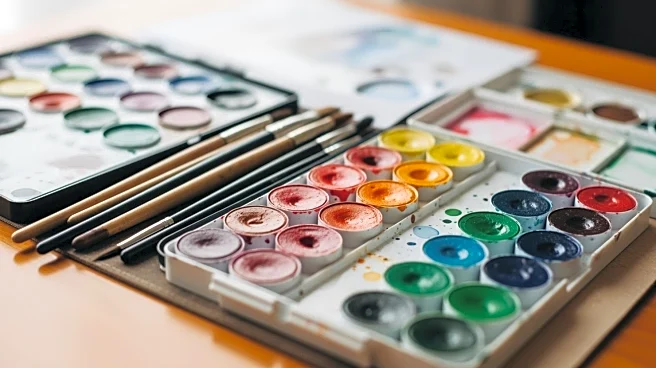What's Happening?
The Kin Museum of Contemporary Art is hosting an exhibition titled 'A Hole in the Real,' which revisits the historical 1965 Picasso exhibition in Kiruna, Sweden. This exhibition originally showcased one
hundred works by Pablo Picasso in Kiruna's old town hall, marking a significant cultural event north of the Arctic Circle. The current exhibition features sixteen works from Moderna Museet's collection and integrates Dora García's new series of works that explore Picasso's connection to the mining industry. García's work draws parallels between Picasso's artistic stance against fascism and the dual role of LKAB, the state-owned mining company, as both an educator and exploiter. The exhibition title refers to Jacques Lacan's concept of a point where language and meaning collapse, reflecting on the vast open pit in Kiruna and Picasso's legacy.
Why It's Important?
This exhibition is significant as it highlights the intersection of art, industry, and cultural education. By revisiting Picasso's works in the context of the mining industry, it raises questions about the role of culture in modern society and the geography of power. The exhibition serves as a platform for reflecting on the impact of industrial activities on communities and the environment, while also celebrating Picasso's contributions to art and his political stance. It underscores the importance of making culture accessible and the potential of art to provoke thought and dialogue about societal issues.
What's Next?
The exhibition is expected to spark discussions on the future of cultural projects in remote areas and the role of art in addressing industrial impacts. The Kin Museum will continue to host artists like Bella Rune and Jonas Nobel, who will develop new works inspired by the transformation of Kiruna due to the expansion of the iron ore mine. These projects will further explore the relationship between art, architecture, and societal change, providing a space for ongoing reflection and engagement with contemporary issues.
Beyond the Headlines
The exhibition not only revisits a unique event in Swedish art history but also challenges visitors to consider the ethical implications of industrial expansion and cultural preservation. It invites a deeper exploration of how art can serve as a tool for education and activism, encouraging a reevaluation of historical narratives and their relevance to current and future societal challenges.
